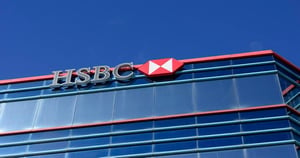Fixed-bottom turbines are being left behind as offshore wind moves into deeper waters. Now Ryder is positioning itself at the heart of this transition, helping to reshape the economics of floating wind with pioneering shared anchor solutions that slash costs and simplify deployment.
As the global demand for clean energy grows, offshore wind is expanding into deeper waters where fixed-bottom turbine foundations are no longer viable. This geographical shift is propelling the advancement of Floating Offshore Wind Turbine (FOWT) technologies. While FOWTs offer access to vast wind resources previously out of reach, their development faces a key economic challenge: the substantial capital required to engineer and install large floating platforms and secure mooring systems in deep marine environments.
One of the most significant cost drivers in these systems lies beneath the surface—foundations. Anchors and moorings constitute a considerable portion of the total expenditure, from design and fabrication to installation and maintenance. To achieve commercial viability and scale, it’s essential to optimise every aspect of these subsea structures. Ryder is at the forefront of this optimisation, driving innovation in shared anchor systems that promise to redefine how floating wind farms are built and financed.
Shared anchor systems are an elegant solution to a complex problem. Rather than requiring a separate anchoring point for each turbine, these systems allow multiple mooring lines to converge at a single anchor. This approach dramatically reduces the number of foundation footprints required, cutting down on construction materials, transportation costs, and the duration and complexity of offshore installation campaigns. Fewer anchors also mean less environmental disruption and a reduced scope for geotechnical site investigations, further lowering total project costs.
However, the advantages of shared anchor systems are matched by their technical complexity. When multiple mooring lines exert forces from different directions, the loading on each anchor becomes significantly more intricate than in conventional single-anchor setups. These dynamic forces can vary widely depending on the type of anchor used, whether suction piles, drag anchors, or vertical load anchors, and their ability to cope with these stresses must be rigorously evaluated to ensure long-term reliability and safety.
Ryder has been playing a central role in addressing these challenges, contributing to the feasibility assessment of various shared anchor concepts. Their work spans a range of loading scenarios and foundation options, drawing on practical experience and advanced modelling techniques to refine and validate each design. Crucially, Ryder is not working in isolation. The company is actively collaborating with Newcastle University on cutting-edge research into the mechanics and performance of shared anchor systems, combining academic insight with industry pragmatism to drive the field forward.
This partnership underscores Ryder’s commitment to fostering innovation that directly addresses the cost hurdles of floating wind deployment. By investing in smarter anchoring strategies, Ryder is helping to unlock new deepwater sites for offshore wind, enabling projects that were once economically marginal to become commercially attractive. This positions Ryder as a strategic enabler in the global push toward net-zero energy, contributing both intellectual capital and technical capability to one of the energy sector’s most transformative frontiers.
Ryder is a specialist engineering consultancy focused on delivering innovative solutions for complex offshore and subsea challenges. From early-stage feasibility studies to full-scale engineering support, Ryder’s expertise spans renewable energy, marine infrastructure, and geotechnical engineering.
Tekmar Group plc (LON:TGP) vision is to be the leading provider of technology and services to the global offshore energy markets. The Group’s three primary operating companies are RYDER, Tekmar Energy and Pipeshield International.



































